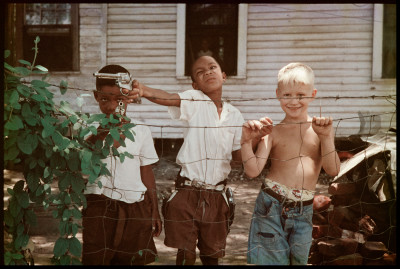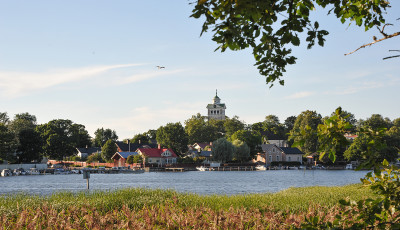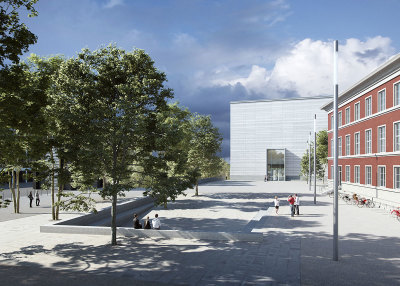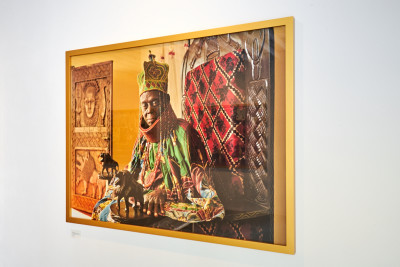What to see at Frieze 2016
What to see at Frieze 2016
By Charles Saumarez Smith and Sam Phillips
Published 6 October 2016
From Assyrian sculpture to a recreation of an artist’s atelier, the RA’s Charles Saumarez Smith and Sam Phillips pick their favourite things at this year’s Frieze fairs in London.
-
Frieze Masters
By Charles Saumarez Smith
I spent nearly the whole of the first day of Frieze Masters going round it, partly because it is such a good opportunity to see works of art of such a great variety, including this year a strong showing of antiquities; and partly because I was taking a Patrons group round at 4pm, not an easy thing to do because the Fair is so crowded.
-

A Persian Soldier, Central Palace, Persepolis, Central Iran, c. 518 – 330 BCE
Courtesy of Sam Fogg, London
-
What was my impression this year? I still think of Frieze Masters as the junior partner of Frieze London, because this was how it was founded. But in recent years it has become just as successful, crowded with international visitors, particularly from Europe, and all the signs of being commercially very successful.
I particularly like Sam Fogg’s stand near the entrance because he always has extraordinary medieval work on display. This year he had an Assyrian relief from Persepolis of museum quality (it was previously owned by the Montreal Museum of Art) and a work associated with Tilman Riemenschneider.
-

Francisco Jose de Goya y Lucientes, Landscape with a Waterfall, before 1810.

Henry Singleton, Royal Academicians in General Assembly, 1795.

Lynn Chadwick, Maquette II for R34 Memorial, 1958.

Eduardo Paolozzi, Group of Bronze Heads, 1993–95.
-
A discovery for me was the stand of prints shown by Emanuel von Baeyer, who works from home and had an exceptionally interesting collection of work, including two landscape prints by Goya and work by less well known 19th-century German artists.
Royal Academicians are well represented. Von Baeyer is showing a rare coloured print of Henry Singleton’s 1795 picture of Royal Academicians in General Assembly. Blain Southern is showing a good range of work by Lynn Chadwick. Jonathan Clark has a display of work from one of Eduardo Paolozzi’s studios. And Ben Brown is showing a very good range of early work by Tony Bevan.
-

Installation view of Tony Bevan's work
Ben Brown Fine Arts, Frieze Masters
Image courtesy Ben Brown Fine Arts, London, 2016
-
Frieze London
By Sam Phillips
A visit to Frieze London is a feat of visual concentration, so dizzying and dramatic are the contrasts of contemporary art. I spent five hours ambling the isles during the preview day this year, which was, for me, a record. Pride comes before a fall, of course, and I was exhausted in the evening, when I had the attention span of a gnat in front of the Picassos and Old Master oils at Frieze Masters.
The relationship between the two fairs is an evolving one. When Frieze Masters was first launched in 2012, its innovation was to look at old art in a contemporary way, learning lessons from its contemporary sister fair; now it seems that Frieze London is learning lessons from its sibling, bringing some historical spectacles to its own contemporary gaze. This year it presented a special section called ‘The Nineties’, in which ground-breaking commercial gallery shows from that decade were restaged – the new section added some coherence and focus to the fair.
-

Installation view, 'Wolfgang Tillmans' at Buchholz & Buchholz, Cologne

Richard Billingham, Untitled, 1995.

Hauser & Wirth stand at Frieze London
-
I stepped back in time to Wolfgang Tillmans RA’s first solo show in a Cologne bookshop, and the presentation of his photographs – different size and stocks of prints pinned to the wall – felt as fresh and dynamic as ever (at Buchholz’s stand). In contrast, Richard Billingham’s gritty photographs of his parents, masterpieces that influenced many, appeared today the stuff of art history (at Anthony Reynolds).
The stands that shone out across the main section tended to focus on just on one or two artists (painting, drawing and sculpture by Gary Hume RA at Sprüth Magers), or, more inventively, brought together lots of artists under one particular curatorial treatment (a playful recreation of an artist’s atelier at Hauser & Wirth’s stand, whose floors and walls were filled with everything from Louise Bourgeois to Phyllida Barlow RA). These gave moments of clarity, before the eyes began to glaze over…
-

Gary Hume, Back of Snowman, 2016.
Blue lacquer, stainless steel. 152.4 x 124.5 x 44.5 cm. Copyright Gary Hume. Courtesy of the artist and Sprüth Magers.
-
Frieze Masters is in London’s Regents Park until 9 October 2016.
Frieze London is in Regent’s Park until 9 October 2016.
Charles Saumarez Smith is the Royal Academy’s Secretary and Chief Executive.
Sam Phillips (@SamP_London) is Editor of RA Magazine.













